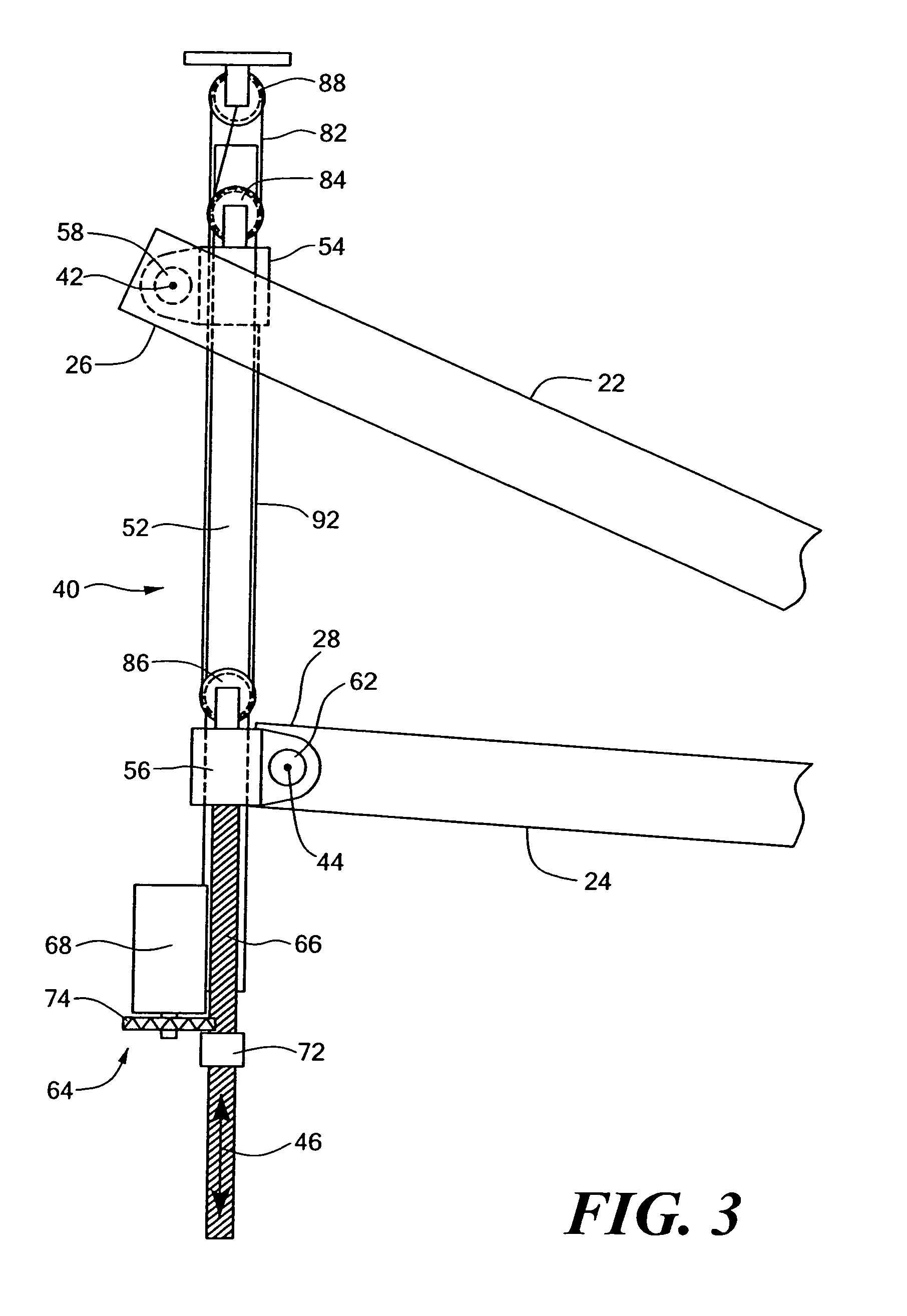Extendable joined wing system for a fluid-born body
a fluid-born body and joined wing technology, which is applied in the field of expanding joined wing systems for fluid-born bodies, can solve the problems of difficult design of deployable wings that offer high efficiency, large external packaging volume needed for housing the mechanism, and complex diamond back mechanisms. , to achieve the effect of increasing aerodynamic efficiency, reducing the size of the wing, and increasing the wing length
- Summary
- Abstract
- Description
- Claims
- Application Information
AI Technical Summary
Benefits of technology
Problems solved by technology
Method used
Image
Examples
example
[0050]A comparison was made of the projected aerodynamic performance of the extendable wing of the present invention with a more conventional joined wing approach in which the forward wing root pivot point remains fixed relative to the vehicle body, such as the diamond back wing. The following L / D ratios were calculated for the wings only at sea level, Mach 0.5 conditions:
[0051]
Max availableL / D @ SL,Itemwing spanM-0.5Fixed Forward57.25″19.4WingInvention79.00″23.3Improvement+21.75″ +21%
For certain air-born bodies, typical wing drag contribution is at least half the total vehicle drag in the best glide condition. Therefore, the use of the extendable wing deployment mechanism of the present invention should result in at least a 10% improvement in vehicle L / D, and a corresponding increase in glide range.
[0052]Larger span, higher aspect ratio wings have an associated aerodynamic penalty, however. As wingspan increases, the rolling moment required to initiate a turn and to counter adverse...
PUM
 Login to View More
Login to View More Abstract
Description
Claims
Application Information
 Login to View More
Login to View More - R&D
- Intellectual Property
- Life Sciences
- Materials
- Tech Scout
- Unparalleled Data Quality
- Higher Quality Content
- 60% Fewer Hallucinations
Browse by: Latest US Patents, China's latest patents, Technical Efficacy Thesaurus, Application Domain, Technology Topic, Popular Technical Reports.
© 2025 PatSnap. All rights reserved.Legal|Privacy policy|Modern Slavery Act Transparency Statement|Sitemap|About US| Contact US: help@patsnap.com



